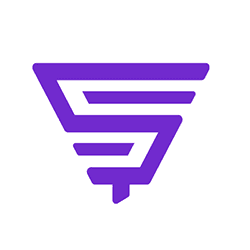Diversity, Equity, and Inclusion (DEI) are essential considerations when building a strong and effective talent acquisition pipeline. Today, most companies recognize that diversity is not just a buzzword — it’s a critical strategy to promote equity and attract top talent. DEI must embody every part of talent prospecting, vetting, acquisition, and retention. More importantly, the strive for DEI must be authentic.
Why diversity and inclusion are important to talent acquisition
Diversity, equity, and inclusion (DEI) go beyond just representation. It’s about creating an environment enriched by diverse viewpoints, experiences, and voices — elements that drive growth and innovation in ways that cannot be replicated without them. Here’s why hiring diverse talent and building a strong DEI pipeline are essential in talent acquisition:
Wider talent pool
Embracing diversity expands the talent pool from which organizations can hire. By actively seeking candidates from diverse backgrounds, cultures, and experiences, companies gain access to a wider array of skills and perspectives. This not only improves the quality of hires but also fuels innovation and adaptability.
Stronger decision-making
Diverse teams bring unique viewpoints and problem-solving approaches to the table. This variety of thought strengthens decision-making processes, reduces groupthink, and sparks creativity, leading to more effective and innovative solutions.
Enhanced reputation
Organizations that prioritize diversity and inclusion develop stronger reputations, attracting top talent. Job seekers increasingly value workplaces that promote diversity and equal opportunities. A positive reputation in these areas gives companies a competitive advantage in the hiring market.
Higher employee retention
A diverse, inclusive work environment fosters employee satisfaction and improves retention rates. When employees feel valued and respected, they are more likely to stay with the organization long-term, reducing recruitment costs and contributing to a stable DEI pipeline.
Legal compliance and risk mitigation
Fostering diversity and inclusion helps organizations stay compliant with labor laws and regulations. By promoting equal opportunities and non-discrimination, companies can reduce legal risks and avoid potential lawsuits related to unfair hiring practices.
Greater market responsiveness
A diverse workforce is better equipped to understand and connect with a variety of customers and markets. This adaptability gives companies the flexibility to tailor products and services to meet diverse customer needs, while also staying agile in response to evolving market trends.
11 easy ways to build an inclusive and diverse talent pipeline
Fostering a diverse and inclusive talent pipeline requires a holistic approach — one that encompasses all stages of recruitment and retention. Thankfully, there’s no shortage of strategies organizations can deploy to successfully attract, retain, and mobilize diverse talent:
1. Cultivate an inclusive organization culture
Start by fostering an inclusive culture where all employees feel valued and respected. Use surveys and exit interviews to gather feedback and pinpoint areas where DEI efforts can improve inclusivity.
By authentically showcasing your commitment to diversity and inclusion in employer branding materials, you highlight the importance of recruiting diverse talent and creating a DEI pipeline.
2. Set measurable goals
Establish clear, actionable, and time-bound goals for your diversity, equity, and inclusion initiatives. For instance, set targets for proactively sourcing candidates from underrepresented groups, revise job descriptions to be more inclusive, and offer training that helps shift toward a more inclusive workplace culture.
3. Organize unconscious bias training
Ensure your recruitment teams are equipped with the necessary tools to uphold DEI standards. Provide unconscious bias training for hiring managers and interviewers to help them recognize and overcome biases. This training is crucial for fostering an inclusive culture and ensuring fair hiring practices when recruiting diverse talent.
4. Create inclusive job descriptions
Review and update job descriptions to ensure they are more inclusive. Differentiate between "must-have" and "nice-to-have" qualifications, and include an equity statement encouraging candidates from all backgrounds to apply.
Use gender-neutral language and tools like gender decoders to ensure inclusivity. Tailor your benefits and initiatives to attract underrepresented groups, enriching your DEI pipeline.
5. Proactive sourcing
Don’t wait for a diverse candidate pool to come to you. Partner with organizations and institutions that support underrepresented groups, such as women’s and LGBTQ+ associations. Consider reaching out to historically minority colleges or Greek organizations to source diverse talent and broaden your DEI pipeline.
6. Implement structured interviews
Develop a structured interview process based on the ideal candidate profile. This ensures all candidates are evaluated according to the same criteria, reducing potential bias. Including skills assessments, such as design exercises or hypothetical scenarios, helps objectively evaluate candidates during the hiring process.
7. Leverage employee referrals
Employee referrals are a valuable tool for hiring diverse talent. Encourage employees to recommend candidates from underrepresented groups and proactively tap into employees' networks to identify diverse talent. This strengthens the DEI pipeline and promotes inclusivity.
8. Build employee resource groups
Encourage employees to join or create employee resource groups (ERGs). These groups foster DEI within your organization and signal to potential hires that your organization provides a supportive space for everyone. ERGs also play an important role in creating an inclusive environment where diverse talent can thrive.
9. Leverage diverse interview panels
Build diverse interview panels to evaluate candidates. This not only helps identify unique qualities but also helps candidates from underrepresented groups feel more comfortable and welcomed during the hiring process.
10. Develop a thoughtful onboarding process
Ensure your onboarding process is inclusive by respecting individuals' preferences for names, pronouns, and workspace arrangements. A thoughtful onboarding experience promotes retention, supports the advancement of a diverse workforce, and enhances your organization’s reputation for inclusion, ultimately strengthening your DEI pipeline.
11. Measure success
Regularly track your progress toward diversity recruitment goals and share the results with your team. By assessing the success of your efforts, you can celebrate the tangible, positive impact DEI has on your organization's culture, talent acquisition, and organizational results.
Need help building a DEI pipeline?
By implementing these steps, organizations can create a talent acquisition pipeline that actively promotes diversity and inclusion, leading to stronger, more innovative, fairer hiring practices.
Better yet, team up with Symphony Talent to find the right outreach strategies for your organization. From AdTech to assessments, targeted recruitment campaigns, and award-winning brand and creative services, we can help you create a stronger, more diverse talent pool. Contact us today to prioritize DEI efforts, and reap the benefits that come from embracing a broad range of talent.orts, and reap the benefits that come from embracing a broad range of talent.


